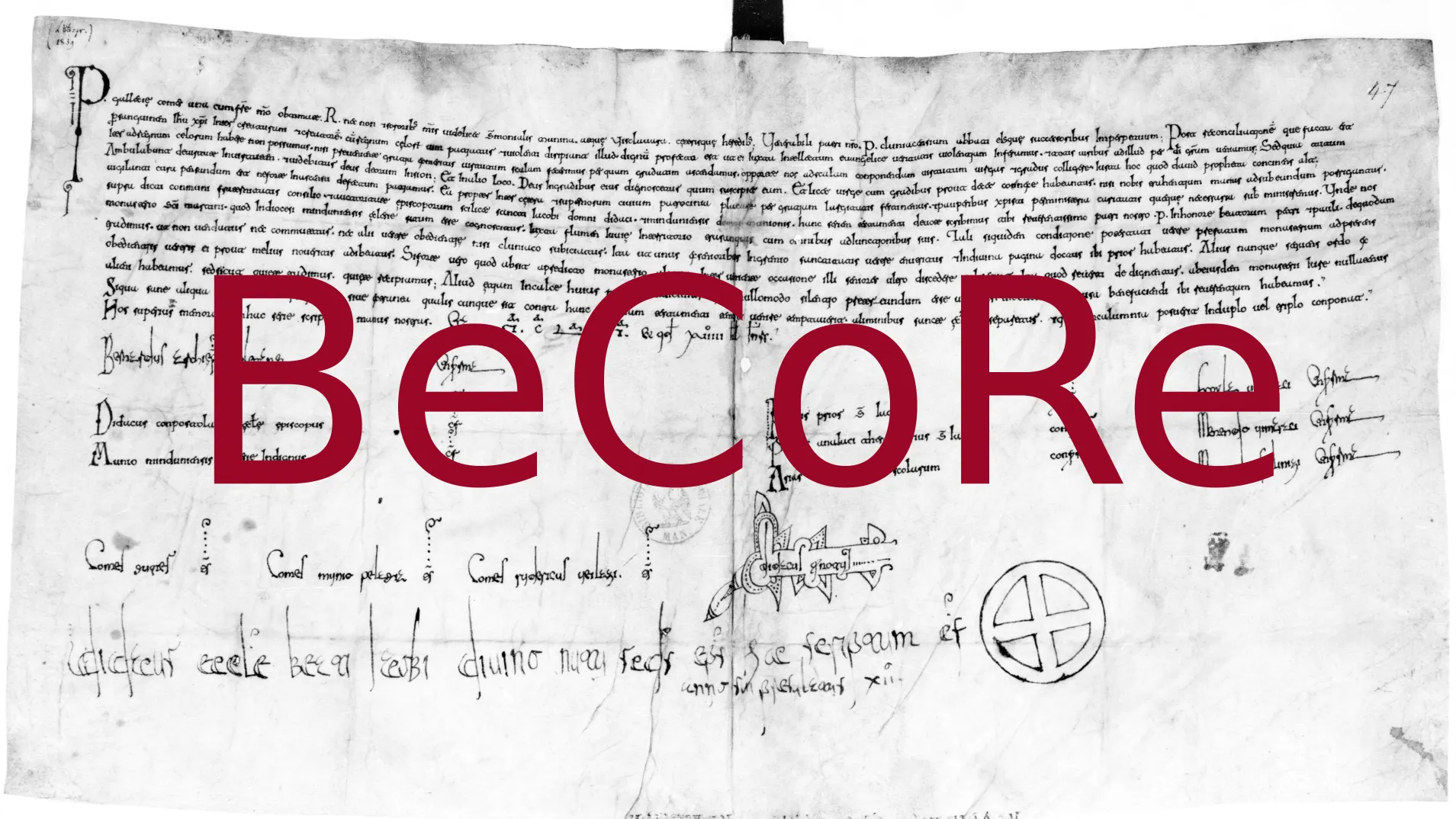
Between Composition and Reception: the Authority of Medieval Charters – BeCoRe
- Hosting organisations
- Zentrum für Informationsmodellierung - Austrian Centre for Digital Humanities (ZIM-ACDH) and CNRS-IRHT - L'Institut de recherche et d'histoire des textes
- Responsible persons
- Georg Vogeler and Sébastien Barret
- Start
- End
BeCore aims at a comparative study of the textual and graphical signs of authority and validity in medieval charters, basing on the resources given by Monasterium ( https://www.monasterium.net/mom/home ), an edition and diffusion portal containing more than 600 000 charters from all Europe, of which some 270 000 are linked to images of the original documents. In addition to adding some new corpora to it, tools for the semi-automated in-dexation and searching in images of handwritten texts, as well as of graphical and ornamental signs, will be implemented in Monasterium, basing on the results of previous projects (projects ORIFLAMMS, ANR-12-CORP-0010, and HIMANIS, European project Heritage plus). This will allow for the serializing and comparative studying of the marks of authority, along several lines of research: the signs of authority, the circulation of models, and the relationships between graphical and textual signs.
Going beyond the mere aspect of authentication, seen from the eye of the detective trying to assess a falsification, also implies questioning the exchanges between the realisation of the documents and their reception. The scribe laying down a charter did so in the expectation of its (maybe fictive?) reception by a third part, a third part which had to be convinced of what it would see, this not being limited to a judicial control of formal authenticity. In that regard, a charter was also the potential carrier of the outward expression of validity, as well as a pos-sible mean of (self-)representation. Assessing the various ways and means used will lead to a kind of phenomenology of the expression of power and authority – the fundamental hypothesis being that it may not be possible to establish a firm and strict typology, as the practices did vary too much in their use of the few possible elements, and it may in consequence be better to work on the level of the observation of graphical phenomena and the reconstruction of their possible reception; but strictly typologising these might be more confusing than revealing.
The project will give insights into this development by studying datasets over a long time period (12th – 15th century and by creating large scale data sets. The selected data sets will contribute to testing hypotheses on the models of authority in formal documentation in monastic orders (OCist, OSB). Therefore, the major expected outcomes of the project are manyfold:
- Increase the size of actual relevant corpora
- Enhance the Monasterium.net data structure in relationship to diplomatic and historical classifications
- Enhance the Monasterium.net metadata structure to allow for research questions considering the graphical features in their historical context.
- Integrate existing tools for automatic analysis of graphical features into Monasterium.net
- Study of the relationship between visual appearance of documents used in monastic live (secular and clerical) in the late Middle Ages and their production contex
The project is funded by ANR (ANR-19-CE27-0021) and FWF (I 4502).